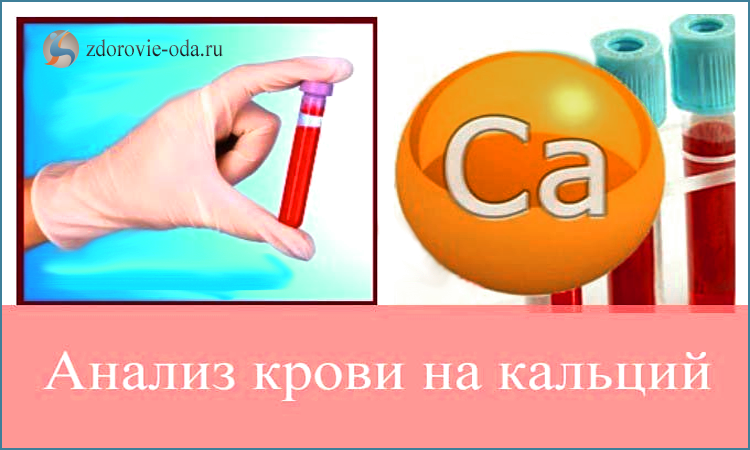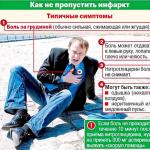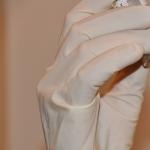Lack of calcium in the body, the symptoms of which extend to almost all organs and systems, can lead to persistent deformities and disorders. Calcium (Ca) is an extremely important element in our body. It not only gives strength to our bones, teeth and nails, but also is a blood pressure regulator, helps in the transmission of nervous and muscle excitation, and is actively involved in metabolic processes. The article will tell in detail the main signs of a deficiency, point out the most useful sources of a macronutrient, and also find out in detail its doses of proper use.
Calcium is one of the few elements that every cell of human tissues and organs uses. According to statistics, most of the population does not get the required amount of it from food, so you need to know what role Ca plays in the body.
- The norm of Ca activates the blood coagulation factor, which ensures the permeability of cell membranes for their nutrition.
- Supports the work of the cardiovascular system by contracting the heart muscles by regulating the rhythm.
- Participates in neuromuscular conduction.
- Normalizes metabolism.
- It is the prevention of colon polyps and cancer.
- Prevention of allergic manifestations.
- A decrease in concentration causes the body to take the necessary nutrient from the depot - bones, enamel. Outcome: pathologies of the teeth, various kinds of microcracks, fractures are formed.
- Controls normal intestinal motility, preventing constipation.
- Regulates the production of parathyroid hormones (calcitonin).
- Improves sleep.
Compensation reduces the hardness of bone tissue, leading to the development of the disease, like.
The human body is a very sensitive organized structure. The lack or non-assimilation of at least one component for exchange can lead to an imbalance in many systems. Therefore, an important role in the formation of Ca deficiency is played by a decrease in the consumption of phosphorus, vitamin D, which are actively involved in the absorption of the macronutrient.
Lack of calcium in the body: causes of deficiency
- The assimilation of Ca directly depends on the norm of magnesium,) these two elements are closely interconnected. With their deficiency, Ca does not enter the right places, but has only two paths. The first is leaching in a high content with the kidneys, including from the bones, the second is deposited in the muscles - these are convulsions, organs - calcification, blood vessels - arrhythmia, joints - arthritis.
- An insufficient amount of Ca in the body can be associated not only with a restriction of its intake with food, but also serve as a signal of hypovitaminosis.
- In women, a decrease in calcium in the blood is observed. Changes in estrogen production affect the non-retention of the nutrient in bone tissue. The less female sex hormones, the greater the loss of matter.
- Another reducing factor is advanced age. The older we get, the more difficult it is for our body to absorb calcium from food, so after 50 years it is recommended to drink K2 (MK7) biological supplements or learn how to cook enzymatic, where there is a lot of K2 (MK7).
- An unbalanced diet plays an important role in the absorption of the nutrient, this phenomenon is also called malabsorption (malabsorption). The combined use of a large amount of sugars along with a macronutrient leads to a deterioration in absorption due to the formation of an insoluble compound. Conversely, the consumption of low-fat dairy products reduces the body's ability to take calcium from food.
Important: Not only simple sugars affect the speed and quality of absorption. Excessive consumption of foods rich in alkaline acid (spinach, chocolate, soy, almonds) also leads to the formation of insoluble calcium salts. The use of alcohol, coffee can increase the "washout" of the element along with urine and feces.
- A sedentary lifestyle does not retain the nutrient, which is a common cause of calcium deficiency in the body and the manifestation of symptoms.
Ca deficiency diseases
Consider diseases and functional disorders that lead to hypocalcemia (low plasma Ca).
- Renal failure - in pathology, there is an increased excretion of the element in the urine.
- Hypoparathyroidism - insufficient functioning of the parathyroid glands, the hormones of which are responsible for the absorption of calcium and its metabolism.
- Medications – Many medications can affect calcium levels. These substances include antibiotics, diuretics, steroid hormones, chemotherapy drugs for cancer.
- Inflammation of the digestive tract - disturbances in the activity of the digestive organs lead to functional disorders in the digestion and assimilation of food, which can lead to hypocalcemia.
People with lactose deficiency, strict vegetarians, adolescents in the period of active growth, pregnant women, women with painful and heavy periods, ladies in menopause are at an increased risk of developing a lack of calcium. These groups need special control, they need an increased consumption of not only foods rich in the element.
General symptoms
Calcium deficiency is expressed in the following symptoms:
- Seizures. Occurrence or morning time), less often contractions can be observed in the thighs, arms and armpits.
- Dry skin and the development of chronic itching, also one of the manifestations of insufficiency include psoriasis changes.
- Brittle nails.
- Increased fatigue and a feeling of chronic fatigue.
- Damage to the enamel - the teeth begin to collapse, multiple caries appears due to the thinning of the enamel. By the way, a significant darkening can also be a symptom of a deficiency.
- Fractures - weakening of the bone tissue provokes an increase in injuries.
- Sleep disturbance - according to the results of studies, it was found that the level of calcium in the blood is directly related to the phase of deep sleep. This phenomenon is possibly due to its participation in the synthesis of the hormone tryptophan (which is responsible for proper rest).
Also, a reduced intake of a nutrient can cause a plateau effect in losing weight or a decrease in the effectiveness of weight loss. Calcium, which is found in adipose tissue, helps regulate metabolism, and is also responsible for removing fat (in fact, fat cells with a high mineral content are most efficiently broken down). That is why, while dieting, it is necessary to consume foods high in nutrients in sufficient quantities.
Often there are paresthesias - a feeling of "goosebumps", tingling, burning or numbness. It is possible to unbalance the entire activity of the central nervous system with the appearance of tremor, memory impairment, confusion.
Lack of calcium in the body symptoms in women
The body of the beautiful half of humanity is protected by nature from the loss of calcium with the help of estrogen. They contribute to its preservation in the bones and enamel, so hormonal changes directly affect the development of deficiency.
During pregnancy, the mother has to consume calcium not only for the needs of her own body, but also to supply the baby for normal growth and development. Moreover, nature is quite cunning - if the nutrient is not enough, then it will throw all its strength to preserve the fetus, actively taking away the reserves of the substance from the bones and teeth. That is why during pregnancy, expectant mothers quickly destroy their teeth.
Signs of hypocalcemia in women are practically no different from those in men. The only difference is the change in the flow of menstruation. The phenomena of PMS are intensifying - increased pain during menstruation, a violation of the cycle (if women have not had problems before).
Fact: not only calcium supplements will help ease the course of PMS (premenstrual syndrome), but also the introduction of dietary supplements with a content.
How to determine the lack of calcium
Blood must contain a certain amount of the element. Symptoms may not always be associated with Ca deficiency. To accurately determine the needs, it is enough to pass a simple biochemical blood test with a concentration setting. This method is effective, but only indicates a lack of a macronutrient, while its causes are important to establish for the full elimination of hypocalcemia.

Sometimes, an analysis may be assigned to determine Ca ions, somewhere from 1 to 1.5 mmol / l., But it is less accurate and more expensive to conduct (it is preferable to choose the simplest option).
The rate of Ca in the blood is approximately 2.2 to 2.8 mmol / l., This is only 1 percent out of 100, the bulk is stored in the bones, tooth enamel.
On the eve of the test, it is recommended not to overeat, take alcohol, drugs that increase Ca, make droppers with a large number of solutions, refrain from cigarettes and physical activity for 30 minutes before the test. Otherwise, the result will be incorrect. With an underestimated test, do not panic, but wait for additional tests:
- urine;
- phosphorus content (without it, Ca exchange is disturbed, they are inseparable);
- magnesium and vitamin D;
- the production of the level of parathyroid hormone of the parathyroid gland, its increase reduces the concentration of the element;
- do densitometry on the state of bone density.
Based on the diagnosis, the doctor will determine why the lack of a nutrient. For example, sufficient content is supplied with food, and in the urine its elevated level or blood plasma gives a normal Ca result, and densitometry shows rarefied bones. There are many reasons, the specialist will find the main one, prescribe treatment.
Features of hypocalcemia in children and adolescents
A young organism requires an increased intake of Ca. This is due to active growth, development of the neuromuscular system, increased physical activity. Adolescence recommends daily allowances that are significantly higher than adult dosages, since this age gives a sharp jump in development and hormonal changes.

Improper nutrition also has an important impact on macronutrient deficiency, which in many children without parental control turns into endless consumption of “junk food” - fast food, sweet carbonated drinks, etc. Such food is rich only in fats and simple carbohydrates, with a meager content of vitamins and minerals.
How much element should be consumed by children by age.
- From birth to six months when breastfeeding only - 200 mg.
- From 6 months to a year - 260 mg.
- 1 to 3 years - 750 mg.
- From 4 to 9 years old - 1000 mg (daily rate for an adult up to 50-55 years old, after -1500 mg.).
- 10 - 19 years - 1300 mg.
Symptoms of calcium deficiency in the child's body appear quickly enough, often the first signs of deficiency are cramps in the calf muscles at night, restless sleep. Children become irritable and may have tremors or twitches. In adolescents (especially in asthenic girls), fainting is often observed.
Hypocalcemia of a young age affects the work of the cardiovascular system, provoking the appearance of a heartbeat and a slowing of the rhythm.
The most dangerous sign of a mineral deficiency is rickets, which can lead to multiple irreversible skeletal deformities.
What foods contain calcium
If the symptoms of hypocalcemia are in the early stages, without progressing to serious clinical diseases, then the deficiency is successfully eliminated by introducing a list of calcium-rich foods into the diet.
The most famous sources of the mineral are dairy products. Sufficient consumption of cottage cheese, cheese allows you to fill the daily need of the body. For example, in order for an adult to get his daily allowance, it is enough to eat 160 grams of cream cheese (this is with the complete absence of Ca in other menu products). An element obtained from milk is well absorbed by the body, in addition, such food is an excellent source of protein.
But not only "milk" can cover the needs of the body, especially since there is a significant stratum of the population with lactase deficiency (intolerance to milk sugar - lactose). Many vegetarians also cut out dairy products. In this case, a valuable source is cabbage, spinach, nuts.
List of foods rich in calcium
| Name | The amount of calcium in 1 serving (mg) | Serving size in grams |
| Eggs | 30 | 1 PC |
| Sardines in oil | 235 | 60 |
| Beans | 130 | 200 gr. boiled |
| chickpeas | 98 | 200 gr. boiled |
| Parsley and dill | Approximately 200 mg | 100 |
| sea kale | 80 | 100 |
| White cabbage, cauliflower, broccoli | 130 mg | 200 |
| Spinach | 50 | 100 |
| Garlic | 180 | 100 |
| Prunes | 145 | 120 |
| Dried apricots | 65 | 120 |
| oranges | 60 | 150 |
| Almond | 75 | 30 |
| Ice cream (made from natural cream, not vegetable fats) | 125 | 100 |
| Cottage cheese | 140 | 200 |
| Cheese | 180 | 30 |
| Milk | 240 | 200 ml |
| Yogurt | 210 | 150 ml |
As can be seen from the table, a lot of Ca is contained not only in well-known dairy products. It can be easily replenished from quite affordable ordinary greens, legumes, canned fish. The latter, by the way, are recommended to be consumed without fail with a lack of calcium, as a source of vitamin D.
Natural food up to 50 years of age is absorbed almost completely enriching the body with the necessary mineral, but this applies to healthy people.
Drink milk children
This phrase from the song of the Soviet cartoon is known even to those who have never seen it. Cow's milk is indeed high in calcium, but its role is vastly overrated. Indeed, in order to cover the costs of the body in the mineral, it is necessary to consume at least 1 liter every day, and to get the necessary calcium for pregnant women and even more - about 2 liters.
But that's not the problem with whole milk. Pediatricians do not recommend giving it to children under one year old due to the high likelihood of developing allergies and the high concentration of phosphorus, which is difficult to remove by the child's body, spending calcium reserves on its utilization. As a result, the problem turns into a vicious circle.
By the way, the well-known pediatrician Dr. Komarovsky in his recommendations suggests abandoning whole milk for children under 3 years old. In order not to provoke increased leaching of the element. At an older age, the enzymatic and digestive systems are fully formed, so this product no longer carries such a high risk of calcium loss.
Recent US studies have found an increased risk of prostate and ovarian cancer. More than 10 thousand people participated in the data collection, according to statistics, in women, the incidence of ovarian cancer increased by 2 times with the regular use of at least 4 servings of whole milk. For men, the figures are slightly lower - the number of pathologies increased by an average of 30%.
The main role of provoking tumor diseases is assigned to insulin-like growth factor and estrogens, which are contained in milk. At the same time, cheese and dairy products do not cause such changes, since the process of enzymatic processing of these substances is largely destroyed.
Of course, you don't have to completely eliminate milk from your diet. It is enough to combine it with other sources of calcium. Also, do not get carried away with low-fat foods, so you deprive yourself of important fat-soluble vitamins - A, E and D, which also have high antioxidant activity.
Conclusion
The lack of calcium in our body has quite serious symptoms and consequences. In the initial stages of hypocalcemia, it is enough to balance the diet. To remove all negative effects. Additional intake of the mineral in the form of biological supplements is recommended if it is impossible to correct the increased needs. You should not take calcium in the form of inorganic compounds (citrates, carbonates), they are deposited on the walls of blood vessels and soft tissues. Preferably in the form of lactates or gluconates. Or not taking supplements at all.
Ca is not recommended for long-term use in high doses without a doctor's recommendation. It is useful to drink in a common heap with other nutrients, where everything complements each other. For the most part, it is not absorbed, which is its deficiency.
Dairy products are one of the valuable sources of the mineral, but it has been proven that plant foods are no less healthy and are not inferior to milk in terms of calcium absorption. Sufficient consumption of greens, cabbage, nuts will help support the body.
Another important point, so that calcium is better absorbed and does not melt like the first snow, you need to do physical exercises.
Watch a wonderful, short video where the doctor shows just 3 exercises to strengthen bones.
From the material of the article, you learned how the symptoms of calcium deficiency in the body manifest themselves in the body, affecting the condition of adults and children. Therefore, if you suspect, you should not waste time, but take care of your health, check the level of the macronutrient, since now this is not a problem and make up for the deficiency, if necessary.
The son records his covers, listen to one of the chic records Despite the fact that he found himself in music in a stroller.
Take care of yourself and your loved ones!


